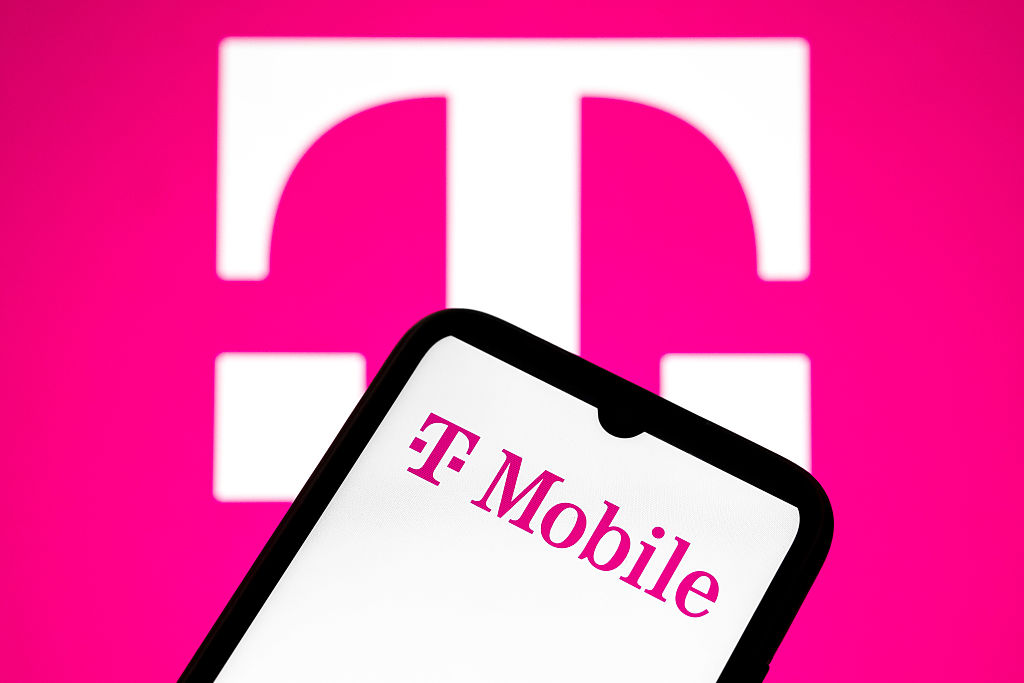Should Your 401(k) Be ‘Custom Made’?
Many retirement plans offer participants the opportunity to get tailor-made investment advice for an additional fee. And like many bespoke products, they can be expensive relative to the alternatives. How do you decide whether an off-the-rack solution is sufficient or you need a personalized solution?

The term “custom made” has long been associated with the finest products. But custom-made products aren’t limited to cars, clothes and furniture. In fact, 7% of 401(k) plan participants on Vanguard’s platform have their 401(k) asset allocation customized to their individual requirements using an advice tool commonly known as a managed account (MA).
Under a managed account program, a plan sponsor selects a third-party adviser to provide independent investment advice to participants. Some plans offer a choice of providers, but many only make one product available.
Participants who enroll in the service are asked to provide the adviser with additional information, such as their risk tolerance, assets outside their 401(k) plan, and expected retirement date. Using this information, the provider will develop the participant’s overall asset allocation, choose investments and monitor and rebalance the accounts, all on a continuing basis. In effect, participants turn over discretion in the management of their entire defined contribution plan account to a third-party professional.
From just $107.88 $24.99 for Kiplinger Personal Finance
Become a smarter, better informed investor. Subscribe from just $107.88 $24.99, plus get up to 4 Special Issues

Sign up for Kiplinger’s Free Newsletters
Profit and prosper with the best of expert advice on investing, taxes, retirement, personal finance and more - straight to your e-mail.
Profit and prosper with the best of expert advice - straight to your e-mail.
In addition to asset management, many providers support additional guidance on savings levels, when to start taking Social Security payments, and designing a sustainable decumulation strategy for retirement. But delegating the asset allocation and fund elections of a participant’s balance is at the heart of the service.
Fees vary widely but are commonly assessed as a percentage of assets and can range from 20 to 75 basis points. And while this may not seem substantial, it can be a considerable sum over an extended period. For example, if you put $10,000 per year in a 401(k) plan over the course of a 30-year career at a 6% return, an additional 30 basis point fee — on top of the investment expense of the underlying plan funds — will cost approximately $50,000 over the period.
Issues to consider before going with a managed account
Most of the literature on this topic available from your plan highlights the various benefits of using a managed account … with typically less focus on its limitations, other than the standard disclosure that all investing involves risk.
So, for participants who want assistance with asset allocation, how do you determine whether the additional cost of a managed account is worth it, particularly as compared to target date funds (TDFs)? Target date funds are prepackaged, age-appropriate investment strategies intended to provide post-employment income while reducing risk near retirement. Put another way, which solution (net of expenses) will produce the best outcome?
Like every investment decision, there are many factors to weigh, but here are some considerations that don’t typically appear in the marketing materials:
Accurate performance benchmarking is impossible
One of the inherent limits with managed accounts is that there is no widely accepted way to gauge your investment performance. Most investment funds are compared to a benchmark, an index of unmanaged securities against which fund performance can be measured. Since every asset allocation for managed account users is customized to the individual, there is no agreed upon way to measure performance versus if you had invested in a target date fund.
The Investment funds available for your MA portfolio are limited
In constructing a customized investment portfolio, managed accounts are limited to use only the investment funds available in the plan. There are small plans where an adviser can pick funds to use specifically as part of an advice product, but this option generally isn’t available for anyone working for midsize or larger employers. This may make it more difficult for managed accounts to achieve similar performance to target date funds that don’t have this limitation. (To be fair, managed account providers do review fund lineups and, if there are additional asset classes needed, will ask the plan sponsor and/or its consultant to consider fund additions.)
Your portfolio could end up looking like a typical target date fund anyway
Providers often stress they are creating a unique portfolio for you based on your individual situation. As cited in a report by the Government Accountability Office (GAO), creating a unique portfolio relies on both customization and personalization. Customization involves allocating a participant’s account based solely on age or other factors that can be easily obtained from the plan’s record keeper, such as gender, income, current account balance and current savings rate. These can be obtained without participant engagement.
Many providers also personalize asset allocations based on factors such as outside outsets, including other retirement plan balances, risk tolerance, expected retirement age and spousal assets. But unfortunately, the track record of participants who use this service is decidedly mixed on entering and maintaining their personalized info.
Even though many providers issue, at a minimum, quarterly reminders in addition to other outreach initiatives, the GAO reported that generally fewer than one-third, and sometimes fewer than 15%, of participants furnish this personalized information. If this is surprising, think about your personal finances and consider whether you have paid a recurring charge (for example, a service contract or streaming service) for a product long after you last used it.
So, what happens if you don’t personalize? In those cases, the providers must make assumptions based on your age and the customized data they obtain from your record keeper. And these assumptions may not significantly vary from those made by your plan’s target date manager for participants in your age cohort.
Put simply, you may be paying for a custom-made product but end up getting the equivalent of a target date fund but at higher cost.
Actions to take before investing
What actions can you take to address the issues above? Here are some ideas:
Do a self-assessment
As highlighted above, managed accounts are far less valuable if you don’t provide and maintain your personalized financial information. So, before anything else, you should you do an honest self-assessment of your long-term willingness to spend the time necessary to maintain the information needed. For instance, if you are the type of person who ignores benefit elections and doesn’t even bother to glance at plan materials, you may not be well-suited for this type of service.
Ask the provider
Reach out to the managed account provider before investing and ask questions about how to benchmark performance and the degree of customization you can expect based on your personal financial situation. Challenge them to prove why their option is superior to your plan’s target date fund.
Use the product for a limited period
Managed account services can be terminated at will. So, one approach might be to sign up for the service, look at the asset allocation, and see how it differs from the age-appropriate target date fund. Then, you can get a better idea of the degree of customization provided and terminate the service if you don’t think it’s valuable. Many providers will offer 60- to 90-day windows when you can take advantage of the service at no cost. Just make sure that you “watch the clock” and don’t let it auto-renew (like those streaming service subscriptions).
Older participants can evaluate alternatives outside the plan
One of the inherent limitations of managed accounts offered through a qualified plan is that you typically have a choice of only one or two providers as record keepers want to limit the expense of building the interfaces required. But participants age 59.5 and older typically have the right to roll over their entire vested account balance to a rollover IRA without limitation. So rather than limiting yourself to the plan’s providers, particularly if you are unable to address the concerns raised above, participants can look at the cost and features of services available through an IRA rollover from other providers.
The bottom line
It’s understandable that many participants may not want to do the research required to weigh using a target date fund or managed account. One study found the average person will spend more time each year planning their vacation than their 401(k) investment options. And since the cost of a managed account is not an out-of-pocket expense but deducted from investment returns, it may seem less impactful. But this is similar to buying a custom-made suit and being unwilling to sit with a tailor to take measurements. You will likely get something very close to an off-the-shelf alternative but at a higher cost.
Many bespoke products require a certain time investment to really reap the benefits. The points above should provide a road map for anyone interested or currently participating in a managed account service to start that process.
Profit and prosper with the best of Kiplinger's advice on investing, taxes, retirement, personal finance and much more. Delivered daily. Enter your email in the box and click Sign Me Up.
Alan Vorchheimer is a Certified Employee Benefits Specialist (CEBS) and principal in the Wealth Practice at Buck, an integrated HR and benefits consulting, technology and administration services firm. Alan works with leading corporate, public sector and multi-employer clients to support the management of defined contribution and defined benefit plans.
-
 Are T-Mobile's Prepaid Perks a Home Run or a Strikeout?
Are T-Mobile's Prepaid Perks a Home Run or a Strikeout?T-Mobile's prepaid lineup promises MLB.TV, T-Mobile Tuesdays and hotspot data. But do the perks make it worth switching?
-
 Verizon Home Internet Is Offering Free Tech to New Customers
Verizon Home Internet Is Offering Free Tech to New CustomersVerizon’s latest home-internet promotion includes free tech, but the real savings depend on pricing, speed needs and how long you stay.
-
 Retirees in These 7 States Could Pay Less Property Taxes Next Year
Retirees in These 7 States Could Pay Less Property Taxes Next YearState Taxes Retirement property tax bills could be up to 65% cheaper for some older adults in 2026. Do you qualify?
-
 5 Smart Things to Do With Your Year-End Bonus, From a Financial Professional
5 Smart Things to Do With Your Year-End Bonus, From a Financial ProfessionalAfter you indulge your urge to splurge on a treat, consider doing adult things with the extra cash, like paying down debt, but also setting up a "fun fund."
-
 Are You a Gen X Investor? Here's How You Can Protect Your Portfolio From an AI Bubble
Are You a Gen X Investor? Here's How You Can Protect Your Portfolio From an AI BubbleAmid talk of an AI bubble, what's the best course of action for investors in their 50s and 60s, whose retirement savings are at risk from major market declines?
-
 Hey, Retirees: Put Your Charitable Gifts in a Donor-Advised Fund (and Enjoy Your Tax Break)
Hey, Retirees: Put Your Charitable Gifts in a Donor-Advised Fund (and Enjoy Your Tax Break)A donor-advised fund is a simple (really!), tax-smart strategy that lets you contribute a large, tax-deductible gift now and then distribute grants over time.
-
 If You're a U.S. Retiree Living in Portugal, Your Tax Plan Needs a Post-NHR Strategy ASAP
If You're a U.S. Retiree Living in Portugal, Your Tax Plan Needs a Post-NHR Strategy ASAPWhen your 10-year Non-Habitual Resident tax break ends, you could see your tax rate soar. Take steps to plan for this change well before the NHR window closes.
-
 Could Target-Date Funds With Built-In Income Guarantees Be the Next Evolution in Retirement Planning?
Could Target-Date Funds With Built-In Income Guarantees Be the Next Evolution in Retirement Planning?With target-date funds falling short on income certainty, retirement plans should integrate guaranteed income solutions. Here is what participants can do.
-
 Your Year-End Tax and Estate Planning Review Just Got Urgent
Your Year-End Tax and Estate Planning Review Just Got UrgentChanging tax rules and falling interest rates mean financial planning is more important than ever as 2025 ends. There's still time to make these five key moves.
-
 What Makes This Business So Successful? We Find Out From the Founder's Kids
What Makes This Business So Successful? We Find Out From the Founder's KidsThe children of Morgan Clayton share how their father's wisdom, life experience and caring nature have turned their family business into a respected powerhouse.
-
 Past Performance Is Not Indicative of Your Financial Adviser's Expertise
Past Performance Is Not Indicative of Your Financial Adviser's ExpertiseMany people find a financial adviser by searching online or asking for referrals from friends or family. This can actually end up costing you big-time.

